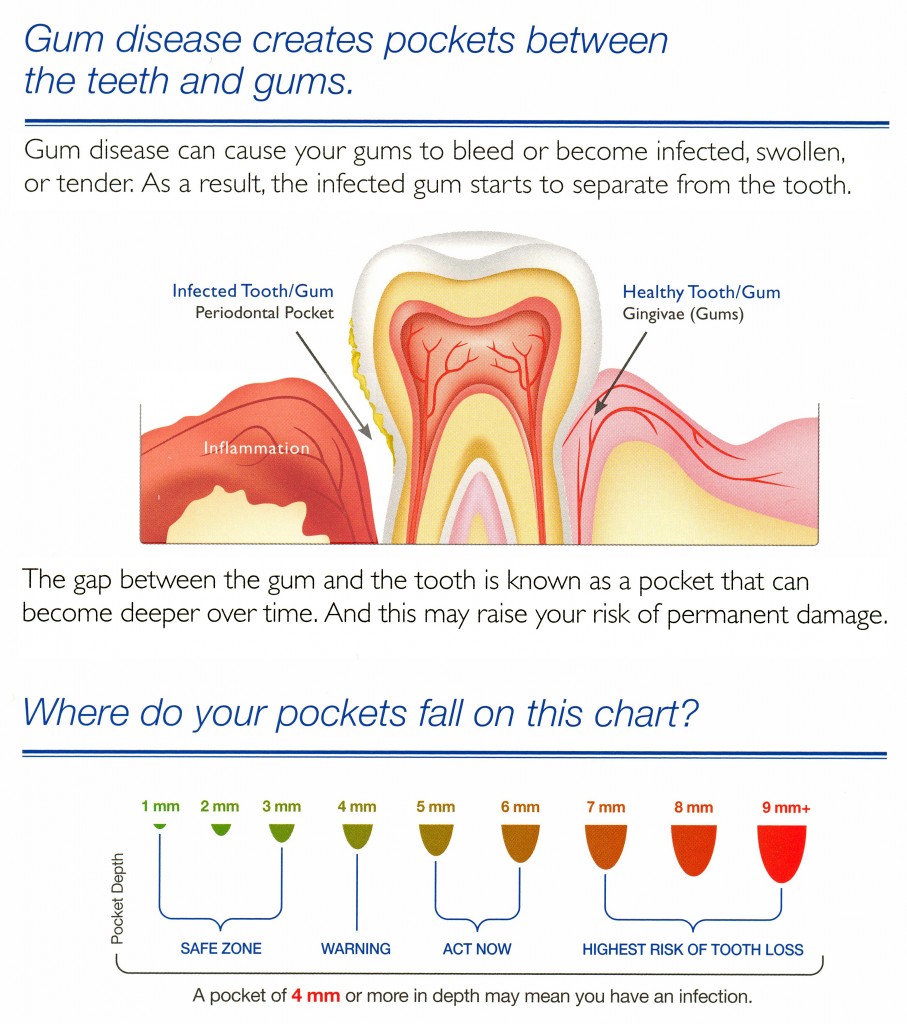Hi everyone!
When you see me as a new patient for an initial examination or when you visit our hygienists to get your teeth cleaned you will have the health of your gums evaluated by using a simple and relatively painless test called a periodontal chart or period chart. Most likely you will hear either me or your hygienist calling out a series of 6 numbers per tooth. What we are doing is measuring, in millimeters (mm), the depth of the cuff of gum tissue around each tooth. This depth is the difference in height between the level of your gumline and the point at which the gum actually attaches to your tooth.2-3 mm is considered healthy and physiologic and anything over 5 mm usually indicates that the bone that supports your tooth has begun to be destroyed by the disease. To give you something to compare with, a pencil eraser is typically about 5 mm in diameter. The diagram at the bottom of the blog explains it better, but here is a little more detail on what measuring the “pockets” mean:
0 to 3 mm without bleeding: Congratulations! No issues!
1 to 3 mm with bleeding: This is gingivitis which is the mildest form of gum disease. Usually, a good cleaning coupled with improved oral self-care is all that is needed.
3 to 5 mm with no bleeding: There is a strong potential for gum disease. Routine cleanings cannot reliably go deeper than 3 mm. Three to four visits a year may be recommended to improve the situation.
3 to 5 mm with bleeding: Early to moderate gum disease (beginning Periodontitis) which may require some additional treatment as well as better home care and three to four visits per year.
5 to 7 mm with bleeding: Bone loss is likely as is soft and hard tissue damage. Almost always requires definitive treatment, possibly over several visits, as well as greatly improved home care and three to four hygiene visits per year to prevent tooth loss.
7mm and above with bleeding: Advanced periodontal disease which means aggressive treatment to save your teeth. Additionally, surgery is almost always required to repair the damage done. Periodontal maintenance visits are also required every 3-4 months thereafter.
As noted, the presence of bleeding or pus when you are being period charted is a strong indicator of disease. Healthy gums do not bleed! The presence of gum disease leads to tooth loss and a greatly diminished quality of life. Gum disease is also implicated in serious health issues such as heart disease and strokes, diabetes, and respiratory problems.
So, don’t put it off! Contact me or my excellent staff at 248-356-8790 for a periodontal (gum) evaluation. The earlier these problems are detected, the easier and more predictable the treatment is.
Until Next Time-
Dr. Mark Langberg
